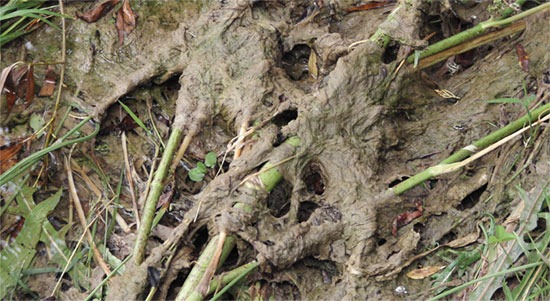Form of algae harmless in Lake Superior, but elsewhere it’s snot
0
Didymosphenia geminata, commonly known as didymo or rock snot, found beside the Mararoa River in New Zealand.
Researchers in Duluth, Minn. are trying to understand how a form of algae is seemingly harmless in Lake Superior, while it is damaging and disdainfully called “rock snot” elsewhere.
Didymosphenia geminata, a single-celled alga, is found with a consistency likened to wet wool along Superior, where it’s actually considered a sign of good water quality because it thrives in cold, clear water.
But in other parts of the world, including New Zealand and New England, the algae take on an uglier and more ecologically harmful role. In these areas, it looks slimier and grows in clumps.
It can also smother aquatic life by closing off the interstitial spaces in sediment, said Jerry Wilhite, a biologist with the South Dakota Department of Game, Fish, and Parks, in an interview with Minnesota Public Radio.
“If it’s completely covering the bottom, the gravel, it could essentially choke out lots of the aquatic insects, because there’s no water flowing through those little spaces between the rocks, and it could potentially choke out any spawning habitat and stuff like that,” Wilhite said.
A small team of research biologists is trying to determine why the algae behave so differently in Lake Superior. The team is unofficially led by Sarah Spaulding, a researcher with the U.S. Geological Survey in Denver, who noted how dramatic an impact the algae can have on a system.
“Starting from the primary producers, so starting from the algae, going all the way up the food chain and including the fish,” she said of its influence.
A chief concern is that boaters and hikers could carry the algae from Lake Superior to other areas where it could be more harmful, which is why many affected areas, including South Dakota, New England, and New Zealand, are educating the public about preventing the spread of the species.
In Lake Superior, a problem algae lies dormant – but why? [Minnesota Public Radio] Image Credit: http://en.wikipedia.org/wiki/File:Didymo_079.jpg













